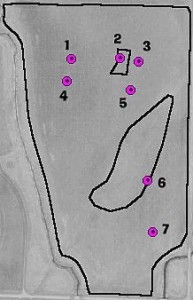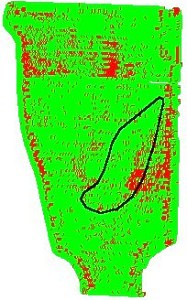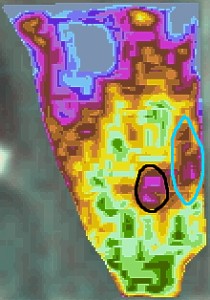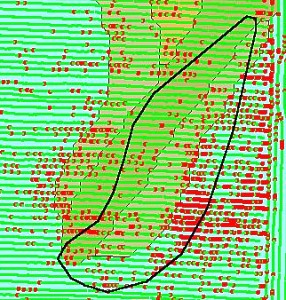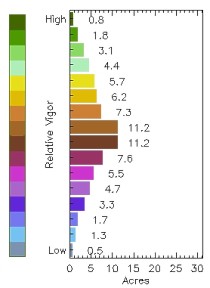|
|
To the left is an ortho aerial image taken on 4/3/1990 at 6100 meters. There are 2 areas marked out in black. The magenta points are post harvest yield loss checks. (make note of # 1, 2 & 3) |
|
|
|
This is an Iowa Soils map. The blue is flood bottom (133 Colo soil). |
|
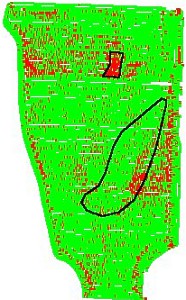
 About 65% of the area highlighted in yellow yielded 44 bu/A. The post harvest yield loss check confirms the 2 varieties yielded the same and the lower yield was due to combine loss. |
This is a 1999 soybean yield map. This 75 acre field averaged 48 bu/A The area marked on top is a suspicious low yield area.
The north part of this field is a different variety (as highlighted in yellow on the smaller image to the left) and was planted about 1 week later. A tile line was severed while adding more tile last fall so water was ponding on the NW part of this field this spring which delayed planting. This wet soil shows up as lower plant vigor on an Earthscan image below. At harvest we adjusted the combine many times attempting to get the soybeans out of the pods completely. |
|
|
|
The yield image on top (#2 area) is .55 acres and yielded 34.9 bu/A We didn't notice any BLB activity here during the growing season. The next 2 areas show the difference on bean leaf beetle activity and less BLB activity. The area to the left is 4.16 acres and yielded 50.24 bu/A The area to the right is 4.45 acres and yielded 41.71 bu/A The area marked out in black is where we sprayed for bean leaf beetle on August 2, 1999. This area is where you could see visible BLB leaf feeding from the road. We used the sweep net several times before August but the populations didn't seem high enough to justify spraying at that point. |
|
